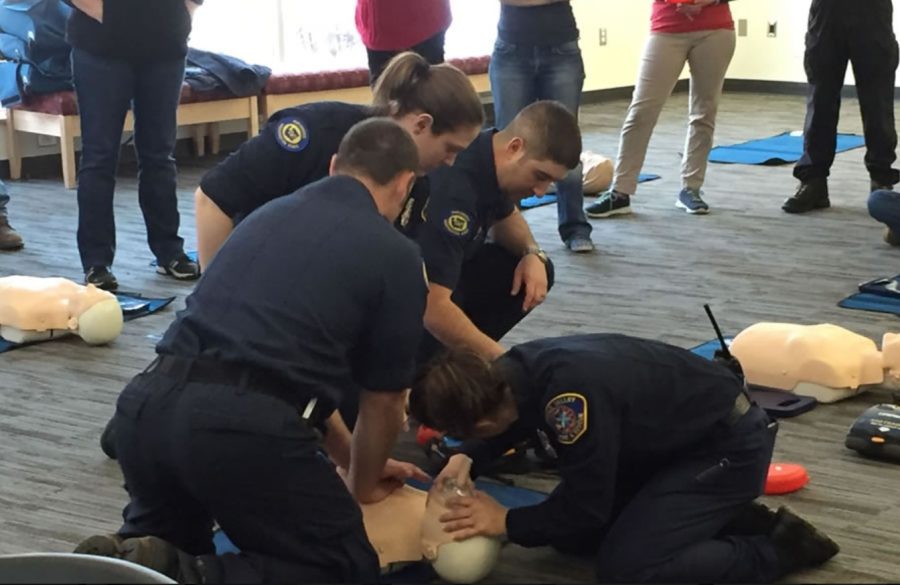CPR is ‘vitally important’ skill
February 16, 2022
CPR is a lifesaving skill that can buy necessary time in an emergency before emergency medical personnel can arrive. The American Heart Association estimates that bystander CPR increases the likelihood of survival by 45%.
“The most important factor is that the highest likelihood of them using that information is on a member of their own family,” Kittitas Valley Fire and Rescue (KVFR) Chief John Sinclair said. “Training helps people be prepared, not panic in an emergency. Whether it’s stopping bleeding or providing CPR, it is vitally important that people know basic first aid and CPR to be able to help members and thjeir own family.”
Riley Mace is a safety officer who oversees CPR and first aid training on campus, within the Environmental Health Safety (EHS) department. CPR and first aid training is provided by KVFR and is free for student employees, staff and faculty. EHS aims to offer several classes every quarter.
One major barrier Mace pointed out is the lack of awareness among staff and faculty on campus of opportunities for training in first aid and CPR. Mace encourages everyone to get trained in first aid and CPR, regardless of the requirements for certain job categories.
Mace described the difficulty in determining the true rate of CPR and first aid trained staff and faculty on campus. Many departments such as police or Recreation Center employees complete their own training outside of EHS. With the COVID-19 pandemic, many classes were canceled. Mace estimates that many whose training has lapsed will be in need of recertification as certificates are only valid for two years.
“Word of mouth is getting the message out there, I think it will become more popular,” Mace said. “The more people who join the more classes EHS can offer.”
The SURC has four teams, Student Union and Operations, Dining Services, the Wildcat Shop and the Recreation Center. Each team is responsible for handling emergencies within their respective departments.
Mace said that according to Occupational Safety and Health Administration (OSHA), regulations, Dining Services does not need to train staff in CPR and first aid, however it would be best practice for all employees to be trained.
Dining Services declined to comment on what staff members are trained in first aid and CPR, or who responds to medical emergencies. Mace said Dining Services was responsive to the opportunity to complete first aid and CPR training, however understaffing reduced the opportunity for team members to complete the training.
A small poll of 10 students was completed in the SURC. The survey asked students if they were trained in CPR. All had reported that they learned CPR in school, with one student having a currently valid certificate. However, the majority of students’ CPR training had lapsed, with the majority also reporting hesitation on using their CPR skills in the real world.
Peyton Brown, senior in family and child life and building manager at the Student Union and Operations, is required to ensure the safety of students and employees at the SURC and respond to any emergencies as needed.
“Last summer, before school started, we had a new employee orientation. Those of us that were new employees, or had expired CPR certification, we had to attend a CPR course and get certified in CPR,” Brown said.
Brown estimates that Student Union Operations employs around 40-50 students who are trained in CPR and first aid, with 7-10 students on duty at any time. There is always at least one CPR certified team member on duty. It’s crucial that employees are able to look out for the wellbeing of fellow students and are prepared to provide assistance to them when required. For those interested in getting certified, Kittitas County Fire offers CPR classes through a mix of online learning and in person classes.

